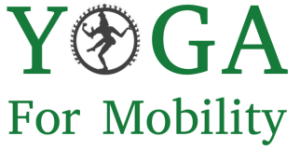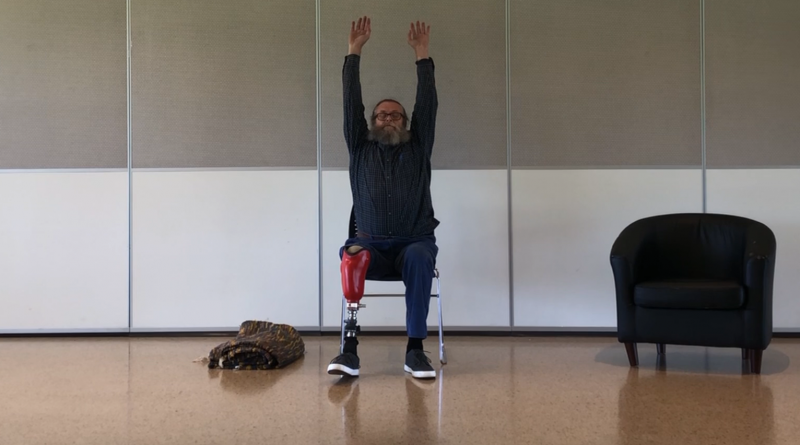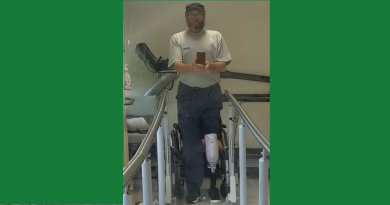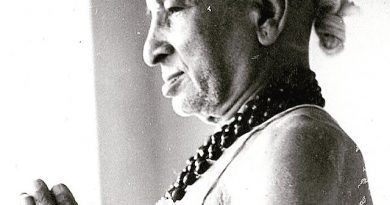Adapting asanas for limb loss
This was how I approached asana practice after my leg was amputated. The approach has worked well for other people that I have worked with. Bear in mind that almost every person I deal with has no experience with any form of yoga practice and are coming out of a long period of immobility. I am sure that there are lots of different approaches, all of which are valuable. This is mine.
My primary goal is to strengthen the core and promote straightness and symmetry. For an amputee, with or without a prosthesis, the process of everyday life is an exercise in asymmetry simply because the body is radically asymmetrical. That causes a lot of short term and long term issues and so it is important to address it.
Initially asanas that can be done lying on a mat are best. There is a lot of support and people have a good opportunity to experience and explore their asymmetry safely. I begin with breathing into the heart centre in the centre of the chest and starting exhalation from the pelvic centre (or any name you prefer) in the centre of the lower abdomen. Very deliberately focus on breathing into the actual centre of the chest and abdomen and doing as much as possible to keep the inhalation and exhalation travelling in a straight line between the abdomen and the chest. That alone takes a bit of getting used to and, while gentle, can end up being quite a workout for some people.
Arm raises from savasana and rotating the knees in a circle, individually and together from apanasana are a good warm up for asana practice. See https://yogaformobility.org/2020/02/07/core-asanas/ for pictures of asanas and their names. The key to adaptation is to consider how an asana effects the pelvis, spine and collar bone and adapt the asana practice to achieve the same result for the person with limb loss.
Without the ability to use arms or legs to reliably help establish and maintain symmetry throughout movement or for both sides of any asymmetrical movement good core control is needed. That is why I begin with simply breathing symmetrically as a first step. Apanasana with a focus on maintaining the correct position of pelvis, spine and collar bone is usually quite enough to begin with.
Once a person has got the idea of moving while keeping those bits aligned properly I generally introduce bhujangasana making quite sure not to bend the neck backwards but rather emphasising movement in the spine. Focusing on quite precise symmetry and slow thoughtful movement guided by the breath is the point. The amount of movement is much less important than maintaining physical symmetry, defined by pelvis, spine and collar bone, throughout the execution of the asana.
Once that is manageable introducing appropriate asymmetrical asanas, naturally followed by their symmetrical equivalent is the thing to do. You will probably have to do more on one side than the other which is pretty standard for dealing with asymmetry anyway.
You can apply the same thinking to any asana but I recommend that people have very good core control and a lot of careful support from their teacher/therapist/carer before graduating to standing asanas if they are lower limb amputees.
I am not personally a big fan of aids in asana practice but they are very useful or even essential to start standing asana practice for lower limb amputees. They help in developing the strength and flexibility needed to execute the asanas as well as give a sense of security for something that is very foreign and daunting at first. Don’t be in a rush to start standing asanas to lower limb amputees. They can be very scary at first and there is as much going on psychologically as physically.
I feel all the asana practice should be done slowly, bracketed by breathing and ensuring adequate rest. While large muscles used for the power in movement are usually easy to deal with the small stabiliser muscles are doing much more work than in a person with the full compliment of limbs. So take it easy and be conservative, especially at first. Safety, both physical and psychological must be the primary concern.
There is a lot more that can be said about asana practice for people with limb loss. I hope this gives you some ideas to consider when adapting asana to your own situation or to someone else with limb loss.




